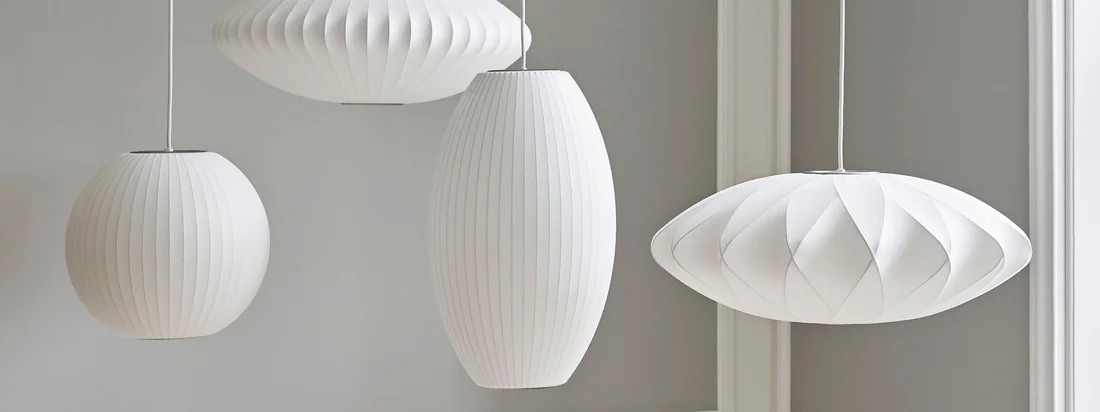Sculptural wall and pendant lights by George Nelson
The Danish furniture manufacturer HAY is the first European designer to market the iconic Nelson Collection of lamps from George Nelson . First produced in 1950, the collection features a range of different shaped wall and pendant luminaires, characterised by their spherical, sculptural shapes and cross-like structures. The delicate lampshades are translucent enough to allow you to enjoy the soft glow of Nelson's revolutionary design within your own four walls.
Swedish inspired design
The lamps were designed in 1947 by the American design pioneer George Nelson designed and first produced in 1952. The elegant globes were inspired by a set of silk-covered Swedish pendant lamps, which Nelson for his office. However, these turned out to be too expensive, so the designer decided to apply a self-weaving plastic spray to a light, rounded steel frame to produce the soft, glowing lights himself.
George Nelson explains: "It was important for me to have certain status symbols around me, and one of these symbols was a spherical pendant lamp made in Sweden. It had a silk upholstery that was very difficult to make... But I was desperate to have one. Suddenly an image popped into my mind... It showed how U.S. military ships were mothballed by covering the decks with nets and then spraying them with a self-weaving plastic... Boom! I rushed back to the office and built a spherical metal frame; then I called several places to find out the manufacturer of the spider web frame. The next evening I had a light with a plastic cover, and if you put a bulb in it, it lit up and didn't even cost $125."
Production in the USA of steel and polymer
All models of the Nelson collection of lamps are still manufactured in the same American factory that originally developed them in the 1950s. The designer lamps are produced in various shapes, including a classic spherical shape and an elongated-oval form. Each model has a steel wire skeleton on the inside, which is spray painted with the translucent plastic polymer on which Nelson in 1947. The result is a timeless luminaire that shines both opaque and transparent.
